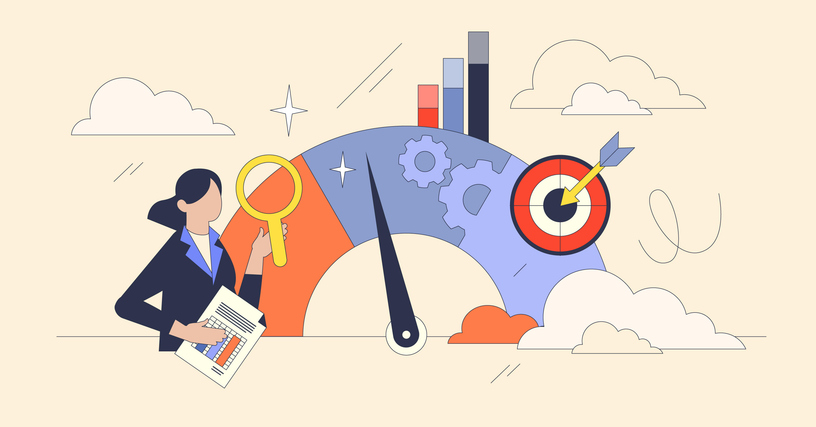Using Data to Measure and Improve Team Productivity and Efficiency
Building a high-performing workforce starts from day one. Effective hiring and onboarding ensure that new employees enter the organisation with clarity, confidence, and the tools they need to succeed. But long-term success depends on more than just a strong start — it requires a deliberate approach to throughout the employee lifecycle. In today’s data-driven workplace, CEOs and managers have more opportunities than ever to gain insights into how teams operate and where improvements can be made.
This guide explores why measuring productivity and efficiency matters, how to track it effectively, and which strategies can help leaders unlock greater results.
Why Is It Important to Measure Team Productivity and Efficiency?
Without measurement, performance management becomes guesswork. Tracking productivity and efficiency allows organisations to identify strengths, uncover bottlenecks, and allocate resources more effectively. It also provides a foundation for setting realistic employee KPIs that align individual contributions with company goals.
When productivity isn’t measured, it’s difficult to know whether challenges stem from processes, training, or workload distribution. Accurate data ensures that leaders can make informed decisions, whether that means adjusting targets, improving workflows, or investing in employee development.
How Do You Measure Your Team's Productivity and Performance?
One of the most reliable ways to measure productivity is through clear goal-setting. Defining KPIs for each role creates a measurable link between daily activities and company objectives. For example, a sales representative’s productivity might be measured by conversion rates, while a customer support agent could be assessed on resolution time and satisfaction scores.
Performance reviews are another vital tool. When structured around data rather than subjective impressions, reviews become more accurate and more helpful for employees. They allow leaders to compare progress over time, identify patterns, and recognise both achievements and areas for growth. Pairing reviews with data ensures employees see the process as fair and constructive.
How to Measure Productivity and Efficiency
Measuring productivity focuses on output, while efficiency looks at the resources required to achieve that output. Both are essential. Productivity answers what is being achieved, while efficiency explains how well it is being achieved.
To capture this balance, businesses often look at metrics like task completion rates, project timelines, cost per unit, or revenue per employee. Technology plays a key role here. Apps and software for tracking team performance — such as project management platforms, time-tracking tools, or performance dashboards — provide real-time visibility into workflows. These tools reduce guesswork and help managers intervene quickly when projects fall behind.
What Strategies Would You Implement to Improve Team Efficiency and Productivity?
Improving performance requires more than measurement; it calls for thoughtful strategies. Continuous training ensures employees are equipped with the skills to succeed in changing environments. Streamlined processes remove unnecessary steps that slow teams down. Encouraging collaboration through shared tools and cross-department communication reduces duplication and increases innovation. At the same time, leaders must avoid the trap of micromanaging, which slows progress and undermines trust. Instead, empowering employees with autonomy — supported by clear goals and KPIs — helps them take ownership of their work and deliver better results.
Perhaps most importantly, the role of continuous feedback cannot be overstated. Employees who receive regular, constructive input are more engaged, more motivated, and more aligned with business goals. Unlike annual reviews, ongoing feedback allows teams to pivot quickly, address challenges in real time, and sustain momentum.
Recognition also plays a role. When leaders celebrate achievements, whether big or small, employees feel valued and motivated to maintain high standards. According to studies on workplace engagement, recognition directly influences retention and performance levels.
How Do Teams Use Data to Improve Their Strategies?
Data transforms assumptions into insights. Teams can use analytics to identify the tasks that consume the most time, the processes that slow projects down, or the customer interactions that drive the most value. For example, if data shows that new hires take longer than expected to reach full productivity, it may highlight gaps in the onboarding process.
Similarly, if performance tracking software reveals frequent delays at a certain project stage, managers can review workflows and reallocate resources. Data also makes it easier to set realistic KPIs, conduct evidence-based performance reviews, and adjust team strategies with confidence. Over time, these insights foster a culture of continuous improvement.
Conclusion
Improving team productivity and efficiency is not about squeezing more work out of employees; it’s about creating systems, feedback loops, and goals that enable people to perform at their best. From strong hiring and onboarding to setting employee KPIs, leveraging feedback, and using software to track performance, every step plays a part in building a more effective workforce.
For CEOs and managers, the key lies in treating productivity not as a one-time initiative but as an ongoing cycle of measurement, reflection, and improvement. With the right data and strategies, teams become more engaged, processes run more smoothly, and businesses are better positioned for long-term success.














